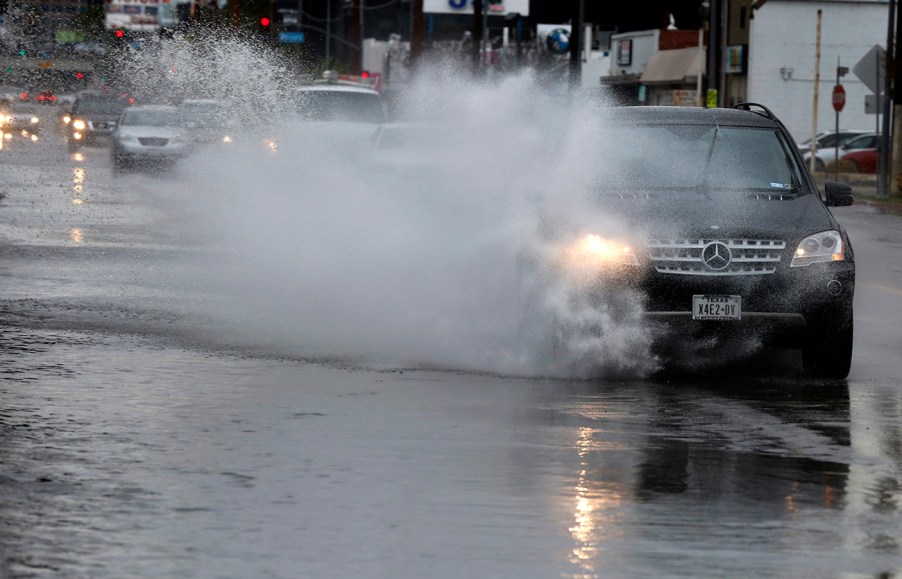
AAA Says Rain Hampers Driving Assistance Tech
Over the last decade, emerging driver assistance technology has become an integral part of car safety. The advancement of proximity sensors and more powerful processing has allowed automakers to include driving assistance features such as lane keep assist, automatic braking, and active cruise control. In effect, driver assistance is the foundation of autonomous driving. However, it appears that the technology may have an unavoidable weakness.
AAA study says rain can impair driver assistance features

Researchers from AAA conducted experiments on cars equipped with automatic braking driver assistance tech under simulated rainfall. The researchers discovered that in several instances, the vehicles failed to recognize a stopped car ahead and lane-keeping features performed significantly worse, according to a report from Automotive News.
The researchers warned that dangerous situations could arise if drivers rely on the assistance features too much since the performance of this technology is generally tested in ideal conditions.
“The reality is people aren’t always driving around in perfect, sunny weather, so we must expand testing and take into consideration things people actually contend with in their day-to-day driving,” said Greg Brannon, AAA’s director of automotive engineering and industry relations.
None of the cars equipped with automatic emergency braking crashed into stopped cars in ideal conditions during testing. However, 17% of the test runs during simulated rainfall ended in crashes at speeds up to 25 mph. When speeds were increased to 35 mph in simulated rainfall, the crash rate jumped to 33%.
Test vehicles equipped with lane-keeping features failed in 37% of the test runs in ideal conditions. During rainfall, the lane-keep assist feature failed in 69% of the test runs.
The vehicles tested included a 2020 Buick Enclave Avenir, a 2020 Hyundai Santa Fe, a 2020 Toyota RAV4, and a 2020 Volkswagen Tiguan.
How is autonomous driving different?
As mentioned previously, driver assistance technology is the root of autonomous driving, but they are not the same. Autonomous vehicles use a complicated array of sensors, cameras, and in some cases, lidar to detect and differentiate surrounding objects. The hardware is paired with powerful algorithmic software which can tell the difference between a human being and another car. The software also allows autonomous vehicles to read road signs and traffic signals.
Driver assistance technology is more basic by comparison. Sensors used for driver assistance features generally use proximity sensors and are limited to recognizing solid objects and reading lines on the road. Driver assistance usually doesn’t read road signs or take constant scans of surrounding objects.
What should you do when it rains?

As the name suggests, driver assistance technology is just that, “assistance.” It is not meant to take complete control over driving duties. Only full self-driving technology can do that. It is best not to rely on your vehicle assistance features too much, especially during rainy weather.
If you are concerned about the driving assistance features in your car failing in certain situations, check the owner’s manual of your vehicle to see what it says about driving in the rain, snow, or fog.
The best thing to do is make sure you are always completely alert and in control when driving, no matter the outside conditions.
RELATED:


